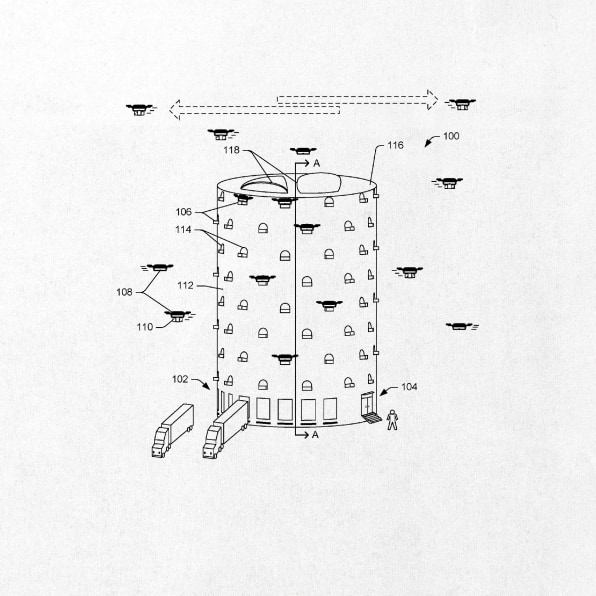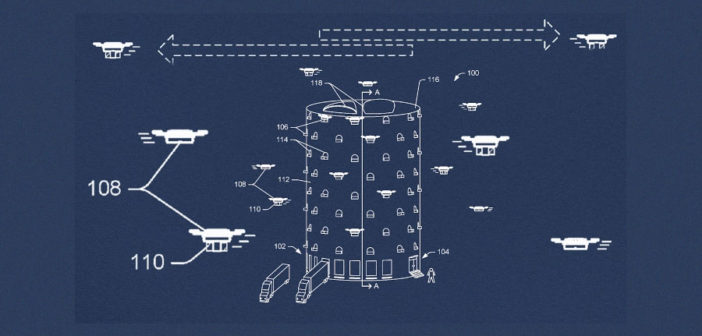And considering recent developments at the company, it’s not as crazy as it sounds.
Amazon’s fulfillment centers are gargantuan facilities. They’re sprawling, 1 million-square-foot buildings that make Super Walmarts look like tiny houses, which means they’re not exactly suitable for neighborhoods that are close to customers in dense urban areas. Since they’re so far from most of Amazon’s customers, these buildings pose a real logistical challenge for the company’s plans to deliver packages via autonomous drones with a short range.
But while 1 million square feet is a lot when it’s laid out in a single story, it’s only about a 30-story skyscraper. Which brings us to Amazon’s latest filed patent: A “multi-level fulfillment center for unmanned vehicles.” That’s right, it’s a drone tower.

Spotted by The Mercury News, it’s designed for “densely populated” areas. The tower allows drones to fly in and out, acting like a giant beehive, with robotic arms that help snatch them out of the sky. Inside, the core features layers of spokes around one central hub. The spokes are specialized for various purposes, like repairing the drones, or loading them with goods.Elevator systems move drones to their launch points along the building’s facade–robots do not appear to fly around the skyscraper like insects in this patent description–but air is channeled upwards through the building to reduce damage to any incidental falling drones.
As for the launch portals themselves, they’ve been spaced in an alternating pattern so that drones don’t get in one another’s way. And in one of the more clever details of the design, which you won’t see in the illustration, the patent suggests that the building could be tapered like a spire, which would allow all drones to take off vertically, regardless of air congestion.
Last year, we saw a concept for a similar idea dubbed The Hive. It seemed like an obvious area of interest for the e-commerce giant: “It’s easy to imagine many different on-demand services that rely on drone delivery, all stacked up in a tower, cooking meals and packaging goods like some hyper-efficient mall food court without a facade,” I wrote at the time, unaware that Amazon would acquire Whole Foods to make such a meal delivery service even more plausible. “Or–if you’re a little less optimistic about the future–cities in which all the buildings belong to Uber and Amazon, and everything else has been bombed into dust by endless waves of air-dropped Subscribe & Save boxes.”
Amazon’s patent, of course, is far from a guarantee that the company will ever construct such a thing. But consider our delivery dystopia one step closer.
–
This article first appeared in www.fastcodesign.com
Seeking to build and grow your brand using the force of consumer insight, strategic foresight, creative disruption and technology prowess? Talk to us at +9714 3867728 or mail: info@groupisd.com or visit www.groupisd.com



